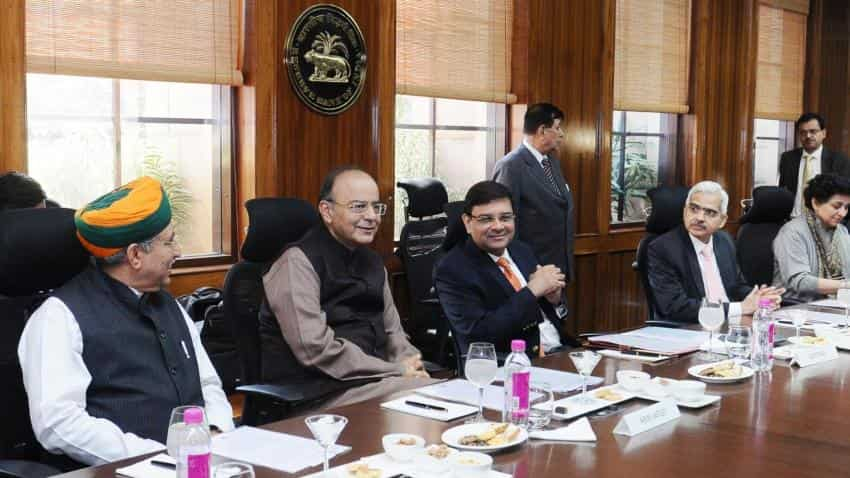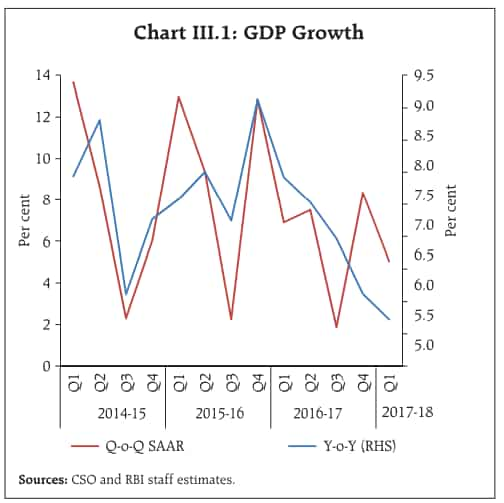RBI outlines ill-effects of an economic stimulus
Government had budgeted gross market borrowings of Rs 5.8 lakh crore ($88.57 billion) for FY18. Of this, 3.72 trillion rupees was raised in the first half of the year.

Key Highlights:
- RBI keeps repo rate unchanged at 6%
- RBI's reverse repo rate stands at 5.75%
- RBI believes fiscal deficit may lead to higher inflation ahead
Even as talks of an economic stimulus ranging from Rs 40,000 crore to Rs 50,000 crore are doing the rounds, the Reserve Bank of India (RBI) has warned the government against the move.
As per RBI, the combined fiscal deficit of both Centre and states may increase by 100 basis points by end of FY18 citing the farm loan waivers as the main reason.
Among five states that have announced farm loan waiver two of these – Uttar Pradesh and Punjab – have made provisions for the likely increase in expenditure in their budgets for FY18.
Budget constraints might force some of the states to reduce their capital expenditure.
RBI said that capital/infrastructural constraints are binding and a reduction in capital expenditure may turn out to be inflationary as costs – including time value/ opportunity cost of delays and material damages – go up as a result of capacity restraints becoming even more acute and due to attendant congestion charges.
Apart from this, higher market borrowings on the back of higher deficits can also put upward pressure on borrowing costs for the Centre and states, which could spill over to the broader economy.
Normura too has stated that the present macro problems are due to higher spending and not lack of it. Hence a pump priming maybe counterproductive at this time.
India's fiscal deficit reached Rs 5,25,045 crore by end of August 2017 - 96.1% of the budgeted estimate (BE) for the financial year 2017-18 (FY18). While revenue receipts stood at Rs 1,18,849 crore in August 2017 - totaling Rs 4,09,868 crore – 27% of BE.
On the other hand, capital expenditure stood at Rs 1,09,648 crore in August - taking it to 35.5% % of BE to Rs 3,09,230 crore. On sector-wise performance, capital expenditure on year-on-year basis was less in sectors like telecommunications (3% in FY18 versus 34% in FY17), railways (21% versus 32%), space (34% versus 38%) and urban development (36% versus 71%).
Normura said, "We expect some revenue shortfall on telecom receipts, disinvestment and dividends, but the buoyancy in direct tax collections suggests the overall revenue miss should not be large. Despite teething issues, GST should lead to higher revenues as it has been inflationary."
Soumya Kanti Ghosh, Chief Economic Adviser at State Bank of India said, "There is no harm if the Government pushes capital expenditure ahead rather than shoring up the revenue mobilisation numbers. "
However, Ghosh added, "Any cutback in expenditure at this point will be majorly deflationary when private investment is unlikely to be forthcoming unless resolution starts happening in Q4FY18. Hence countercyclical fiscal policy is the need of the hour. "
In SBI's view, the government should not get straitjacketed in the fiscal consolidation agenda so that the development goals are compromised.
India's Q1FY18 GDP touched a three-year low of 5.7% - a marked decline from 7.9% growth in the corresponding quarter of the previous year.
Ghosh revealed that the continued fall in GDP since Q2FY17 has raised the spectre of whether growth slowdown is currently temporary or no. He added, “We certainly believe that we are in a slowdown mode since Q2FY17 and any slowdown that has been prolonged till Q1FY18 is technically not short-term in nature or even transient.”

RBI believes that inflation will be impacted if fiscal deficit gets widen as these two indicators have long-run relationship.
RBI mentioned that inflation trajectory is poised to firm up over the rest of the year from the rather large scale of state level farm loan waivers and the reports of a likely fiscal stimulus.
Finally RBI said, "With the combined fiscal deficit budgeted at 5.9% for 2017-18, empirical estimates suggest that an increase in the fiscal deficit to GDP ratio by 100 bps could lead to a permanent increase of about 50 bps in inflation."

In 2008-09, India’s fiscal stimulus package involved a blanket 4 percentage point cut in the excise duty rates, Rs 20,000 crore in plan spending by the Government, Rs 10,000 crore funding for infrastructure finance, export subsidies and a large government order for new buses to replace State public transport fleets.
Get Latest Business News, Stock Market Updates and Videos; Check your tax outgo through Income Tax Calculator and save money through our Personal Finance coverage. Check Business Breaking News Live on Zee Business Twitter and Facebook. Subscribe on YouTube.
12:59 PM IST











 Electricity distribution companies continue to remain a burden on state finances: RBI
Electricity distribution companies continue to remain a burden on state finances: RBI RBI imposes penalties on IndusInd Bank and Manappuram Finance for non-compliance of certain norms
RBI imposes penalties on IndusInd Bank and Manappuram Finance for non-compliance of certain norms Forex reserves drop $2 billion to $652.86 billion
Forex reserves drop $2 billion to $652.86 billion RBI flags rising subsidies by states as incipient stress
RBI flags rising subsidies by states as incipient stress Wholesale inflation eases to 1.89% in November from 2.36% in previous month
Wholesale inflation eases to 1.89% in November from 2.36% in previous month